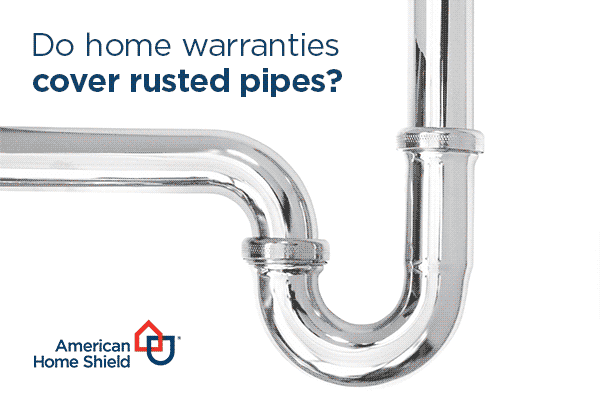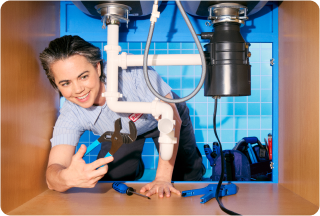Does a Home Warranty Cover Pipes with Rust and Corrosion?

Learn how to spot the signs of rusty pipes and pipe corrosion, what you can repair yourself, and when it's time to call a professional.


Learn how to spot the signs of rusty pipes and pipe corrosion, what you can repair yourself, and when it's time to call a professional.
Rust and corrosion are two of the major contributing factors to plumbing issues. However, pipe corrosion or rust do not have to spell disaster. Discover what causes these issues and how you can protect your home and budget from this catalytic oxidation situation (say that three times fast!).
What causes pipes to rust and corrode?
Rust occurs when iron and oxygen meet water. Pipes made of older materials such as metal, galvanized steel, or cast iron are more likely to rust. These types of pipes corrode more easily than newer pipes made of copper, polyvinylchloride (PVC), acrylonitrile-butadiene-styrene (ABS), or cross-linked polyethylene (PEX).
If you live in an older home, your house likely uses cast iron or galvanized pipes. These metals react with oxygen and minerals found in water to create rust, which then leads to corrosion. If you are seeing rust on the outside of your pipes, it’s a fair bet that the inside of the pipe is fully rusted, too.
You might experience pipe rust and corrosion even with newer pipes. If you see blue–green stains around your plumbing fixtures or tiny leaks in your pipes, you may have copper pipe corrosion, which is typically caused by highly acidic water.
Thinking about coverage?
Security for your home. Protection for your budget.
How do I know if my pipes are rusted?
The most obvious signs of pipe rust and water pipe corrosion are visible orange–brown coloring and leaking pipes, but there are several more subtle signs that imply that your pipes are compromised. These signs include:
How do I fix a rusty pipe?
Many homeowners attempt to fix their own rusted or corroded pipes on their own. However, expert service contractors recommend that homeowners do not try and fix them on their own since amateur DIY attempts at pipe repair can cause extensive—not to mention costly— damage.
Metal pipe rust can sometimes be treated with a stainless-steel clamp or epoxy, but these repairs are temporary. To fully remedy the rust, you may need to replace your old water pipes with shiny new ones. Replacing old, galvanized water pipes typically takes between a few days and a few weeks, depending on your home's size and specific plumbing needs.
Does my home warranty cover repairing or replacing rusted or corroded pipes?
Every American Home Shield® home warranty plan covers repairs of your interior plumbing lines when they encounter issues due to pipe rust and corrosion. Our plumbing lines warranty means that you don’t have to throw your money down the drain when you notice a rusty pipe. Simply submit a service request online or by phone and let us take care of the rest. Explore our home warranty plans and learn what else is covered by a home warranty.
See how a plumbing protection plan can help with covered repairs.

AHS assumes no responsibility, and specifically disclaims all liability, for your use of any and all information contained herein.
Have a plan for your home when things don't go according to plan
Shop Home Warranties